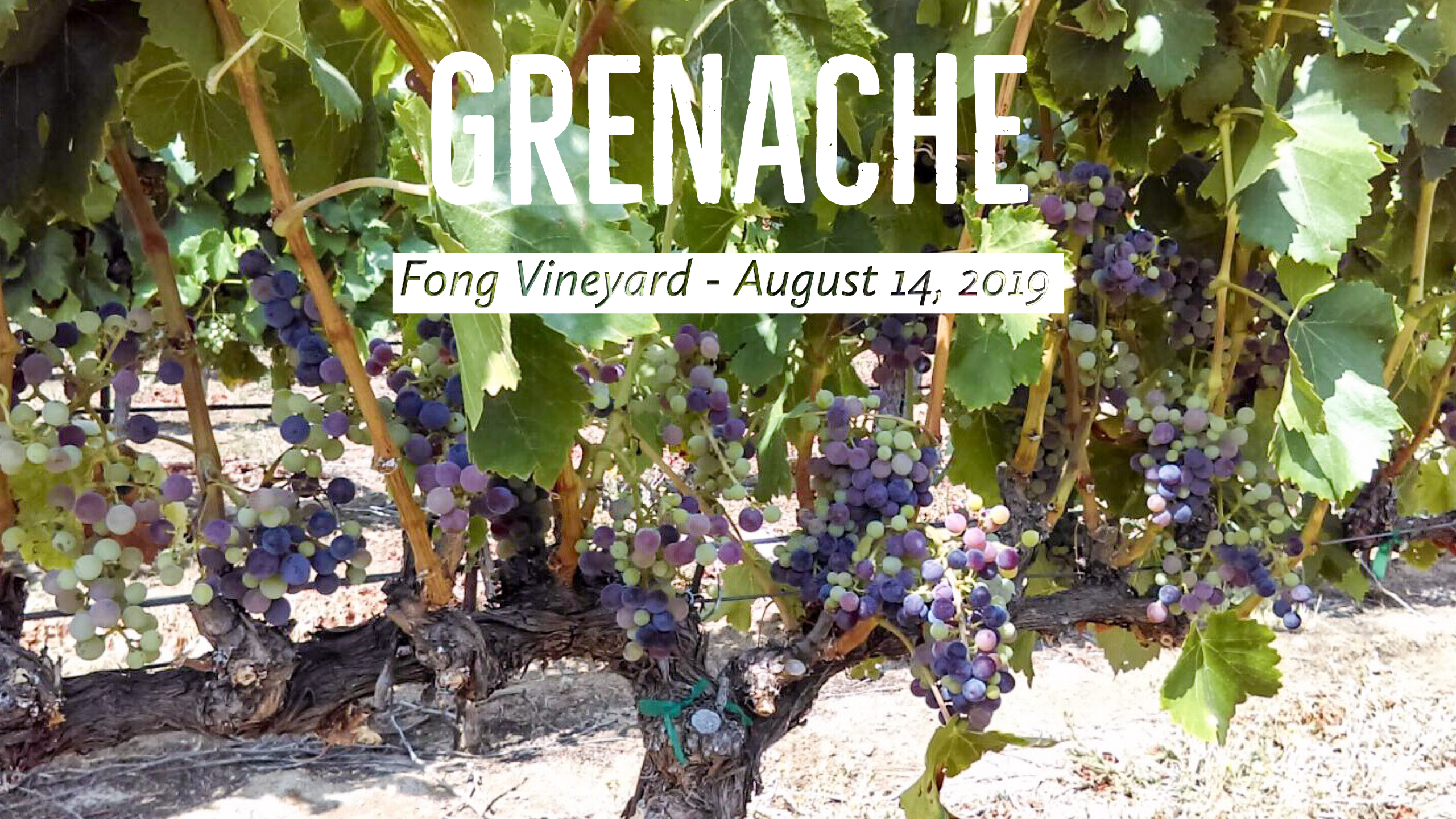Grenache – a case study in color

A previous post describes the special care we take to prevent reduction (sulfur odors) in our Syrah. It is one example of tailoring winemaking to the variety. But the techniques used with Syrah won’t work with every variety. An example is Grenache, yet another variety that requires special care.
While not prone to reduction like Syrah, Grenache does have its own challenges* – the variety is color challenged. Unlike Cabernet and Syrah, which have an abundance of color, Grenache is color starved.
The color pigments in most wine grape varieties (called anthocyanins) are found in the skins. The concentration of anthocyanins in Grenache is low, as are other beneficial polyphenols necessary to stabilize what color there is. The winemaking goal with Grenache, then, is to extract as many of the beneficial polyphenols as possible in order to improve color intensity, provide stability during aging, and optimize the structure and mouthfeel of the wine.
Many traditional winemaking techniques can be modified to enhance color extraction. Length and temperature of maceration (time period in winemaking when color is extracted from the skins) can be played with – as can different methods of maceration.
Increasing the fermentation temperature is one method winemakers will use to increase color extraction. However, this method easily runs into trouble with Grenache – not only does the more rapid fermentation risk blowing off Grenache’s delicate aromas, but any additional color can go out of solution due to the poverty of color-stabilizing polyphenols in the grape’s skin.
Another winemaking technique, saignée, is sometimes employed. Saignée – to bleed – involves removing a portion of the juice prior to fermentation. Saignée increases the relative concentration of skins (hence, anthocyanins) in solution and can improve the color in the final wine. The bled-off juice is turned into a rosé, which recovers the cost of the lost wine and provides cash flow while waiting for the red wine to develop.
Saignée rosé is bigger and riper than those produced in the traditional method. If this isn’t your style, then Saignée isn’t really a good option. This is why a number of winemakers are experimenting with the addition of enzymes and enological tannins.
Enzymes are designed to break down the cell walls, thereby freeing the color pigments. Today, they come in a number of flavors, providing partial hydrolysis of the polysaccharide pectins (pectinase), cellulose (cellulase), and hemicellulose (hemicellulase-xylanase).
When I started in winemaking, pectinase – the enzyme that targets pectin – was the only enzyme used in winemaking. A tiny amount of pectinase rapidly turned the grape must into a soupy mixture. Though the color intensified initially, some of the products contained trace quantities of – glucosidase that actually hydrated anthocyanins to an unstable form – leading to color loss! In either case, my bench experiments with pectinase were disappointing. Not only was the ‘soup’ hard to filter, but the enzymes seemed to extract herbaceous and astringent compounds, most likely from the seeds. And, if these problems weren’t bad enough, the additional color extracted by the enzymes was not stable with aging.
It became clear that something else was needed in order to stabilize the color pigments extracted with enzymes. Suppliers soon began promoting enologic tannins to stabilize the anthocyanins and inhibit oxidation. Tannins are added in conjunction with the enzymes prior to fermentation. Results to date have been mixed. Some researchers report increased color intensity while others find the tannins don’t integrate well – leading to bitterness and degraded aroma quality.
With all of these issues, you can see why we don’t use enzymes or enologic tannins in any of our wines. But there still are a few things we can do to maximize color in our Grenache. First, we hope for a good harvest! A good harvest provides maximizes the available color and beneficial phenolics in the skins. A good harvest also assures the high acidity and low pH that is beneficial for color stability.
Once harvested, we ferment at a cool temperature to favor co-pigmentation. Co-pigmentation, that’s the key. It is the process of getting flavanols to conjugate with the anthocyanins to stabilize them in solution. Historically, this has been done with co-fermentation, the most known example being the fermentation of Syrah with Viognier. In this process colorless flavanols from the skins of the Viognier polymerize the anthocyanins in the Syrah so they don’t return to solution or degrade with oxidation reactions. It also color shifts the ruby red of the Syrah towards a purplish hue.
In the absence of a suitable white cultivar, we co-ferment our Grenache with untoasted oak chips. This may sound strange, but many years ago Roger Bolton of UC Davis determined that untoasted oak chips, when fermented with the wine, provided cofactors that improve color stability without adding oak flavors to the finished wine.
We’ll soon have a chance to see how well our approach works when we bottle our 2019 Fong Vineyard Grenache. Look for its release late 2021 or early 2022.
________
* Grenache is also prone to oxidation due to the high concentration of hydroxycinnamic acid derivatives (caftaric acid) in the grape. But this is a story for another day.


